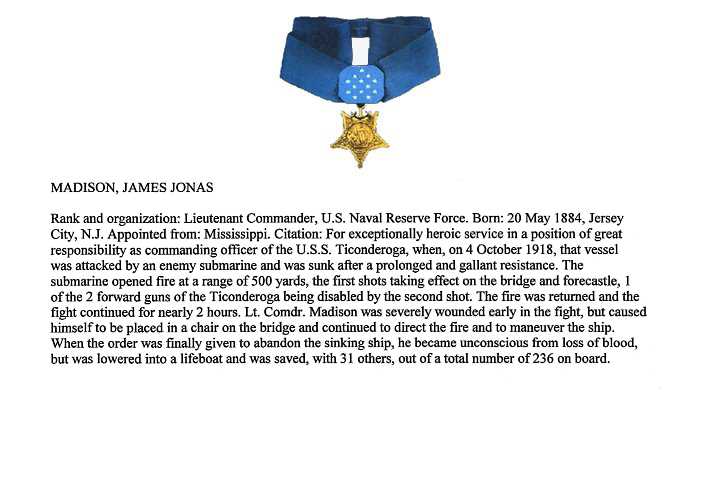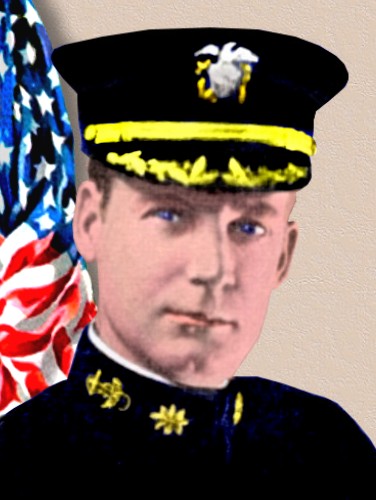MADISON-JAMES
JAMES JONAS MADISON

CDR


One of the biggest challenges faced by the United States when it entered World War I was to find enough shipping to transport its troops and supplies to Europe. This was a crucial task since American troops and supplies were desperately needed on the Western Front. The Naval Operations Transportation Service (NOTS) was formed in late 1917 to oversee this immense task. Although NOTS started out with only 72 ships, by the end of the war it had over 450 ships manned by 5,000 officers and 45,000 enlisted personnel, most of whom were naval reservists. Almost a quarter of the NOTS ships (104) were German merchant vessels that had been interned in the United States. Ticonderoga, the former German vessel Kamilla Rickmers, was one such ship. Commissioned into United States naval service on January 5, 1918. she made two voyages to France in the winter and summer of 1918.
In September 1918, Ticonderoga loaded Army cargo in Norfolk, VA and joined a convoy bound for Europe on September 22, 1918. The cargo consisted of horses and 116 Army troops to tend them. Ticonderoga had a crew of 16 officers and 108 sailors and was armed with two guns: a 6-inch gun aft and a 3-inch gun forward. During the night of September 29, the ship developed engine trouble because of the inferior grade of coal she was burning and fell behind the convoy.
Early on the morning of September 30, Ticonderoga sighted the German U-boat U-152 through the mist just off its port bow. The submarine was sitting on the surface with its engines stopped. Ticonderoga's commanding officer, Lieutenant Commander Madison, attempted to ram the U-boat but was unable to maneuver the ship in time. U-152 quickly brought its guns to bear and, at point blank range, killed most of the bridge crew and destroyed the forward 3-inch gun. Because the U-boat was so close, Ticonderoga was unable to bring its aft 6-inch gun to bear on the submarine. The battle raged off and on over the next two and one-half hours, with lulls coming when the U-boat submerged to reposition itself. Although Madison was severly wounded early in the engagement, he remained on station on the bridge, maneuvering the ship and directing the ship's guns. When the aft 6-inch gun was finally knocked out, U-152 closed to 1,000 yards and finished the ship off with a torpedo.
By the time the order was given to abandon ship, most of the crew was either killed or wounded and only one lifeboat and one life raft were left. Madison, who was then unconscious from loss of blood, was placed in the lifeboat. The U-152 came along side the survivors and took two officers prisoner. The other survivors were left, abandoned, hundreds of miles from the Azores. The life raft eventually drifted apart from the lifeboat and was never found. Those in the life boat, 24 sailors and soldiers, including Lieutenant Commander Madison, were rescued by the British steamer SS Moorish four days later. The two Naval Reserve Force officers taken prisoner by U-152 arrived in Kiel, Germany on November 15, 1918, four days after the Armistice.
LCDR Madison spent the remainder of his short life in the Naval Hospital, Brooklyn, including for the amputation of his leg, passing May 20, 1922.
Submitted by Doug Bewall RMCM USN Ret., taken from Honor, Courage and Commitment: United States Naval Reserve Medal of Honor Recipients, Naval Historical Center

